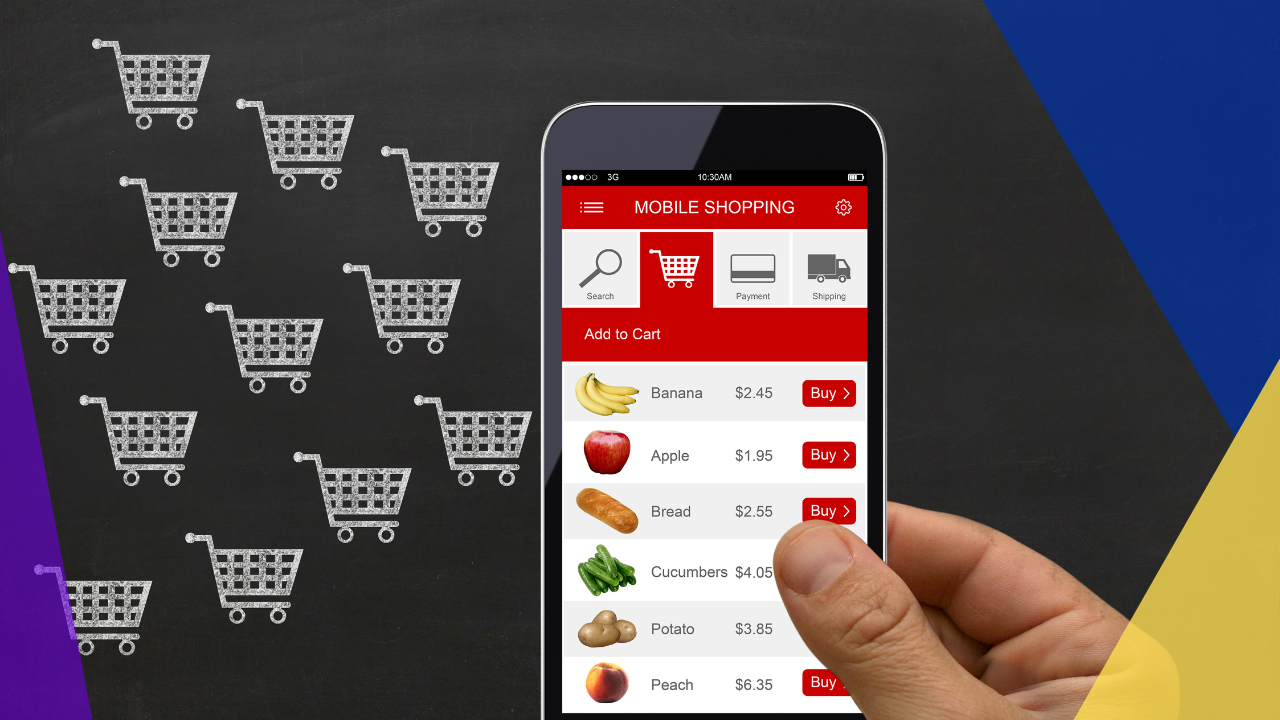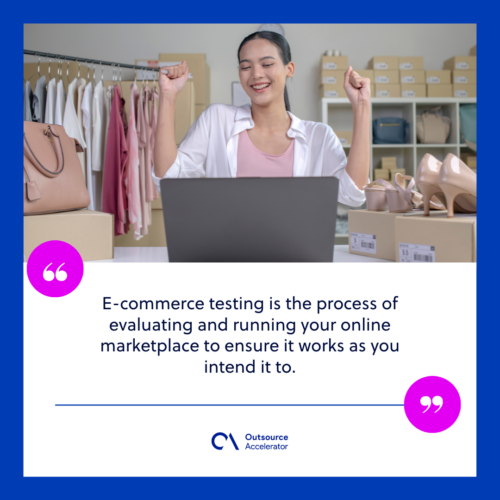Optimize e-commerce testing for maximum effectiveness

Online shopping and e-commerce have been around for a while, but the pandemic has really kicked the digital marketplace scene into overdrive.
Businesses and small brands are migrating to the digital world, establishing their own e-commerce sites and stores that customers can easily access.
However, before launching your e-commerce store to the world, you have to make sure it runs the way you want it to, and that is where e-commerce testing comes in.
What is e-commerce testing?
E-commerce testing is the process of evaluating and running your online marketplace to ensure it works as you intend it to.
You are essentially visiting your e-commerce market as if you were a customer yourself. Part of this process involves checking that all the features are operational, including browsing for products, placing orders, and processing payments.
E-commerce testing also involves identifying potential issues or roadblocks that a customer may encounter when visiting the site and fixing these before launching the site to the public.

Why is e-commerce testing important?
E-commerce testing is a vital step that businesses cannot overlook as it ensures an easy and hassle-free shopping experience for customers.
Being able to shop quickly and freely without any problems increases conversion, satisfaction, and retention. This is why brands must always ensure their e-commerce is up and running smoothly.
Things to remember before e-commerce testing
If you already have an e-commerce website, do not be too excited to launch it. You still need to do a test run to check for issues.
Before conducting your test, here are some things to keep in mind:
Business requirements
Make sure that you have all the necessary permits and licenses to run and launch an online marketplace.
Double-checking your requirements ensures that you are selling goods legally and that your business is registered as a taxpaying entity.

Different customer scenarios
Different customers with different needs and experiences will be going through your e-commerce website. You have to be prepared for any type of scenario.
Use this time to run different situations and how to approach them.
For example, you can pretend you are a customer with a question, so try messaging a chatbot or customer service portal.
Legal compliance
All businesses must be compliant with federal and state laws. Failure to adhere to standard compliance rules could result in your shop being shut down and a build-up of fines.
Legal compliance must include:
- Maintaining the data protection and privacy of your customers
- Following ethical advertising and marketing practices
- Communicating the terms of service and contractual agreements
How to conduct e-commerce testing
E-commerce testing can be done in different ways, depending on your business. Here is a rundown of the things to look at when conducting a test:
Home page
Your site’s home page is the first thing your customers will see. Make sure everything on the home page is functional and easy to navigate.
This is where you will check the home page’s layouts, categories, or products to see if anything is out of place or needs fixing.
Search and navigation
The search bar and different navigation tools help your customers find what they are specifically looking for without having to scroll through many different product pages.
This is where you have to test the accuracy, reliability, and relevance of the suggested products. Make sure the customer finds each product or at least the ones closest to what they need.
Check if your categories and subcategories are working properly.
For example, if a customer wants to arrange the products starting from the lowest price, make sure that this is what they see when they toggle that category.
Product listings
When a customer views a product, you want to give them as much information as possible in order to convince them to buy it. This is where a little bit of marketing comes in.
Check if the product pages accurately describe and display the product. Make sure your photos are clear, and the details are complete.
Checkout process
You want to give customers an easy checkout process and payment options, including updates regarding shipping and delivery.
You can give your shoppers the option to create an account before making a purchase or continue purchasing as a guest. Do not forget to include a reference number or order number for easy tracking.
You can test the checkout process yourself by having someone purchase a product.
Check if the process is simple enough to complete without errors and if the customer received the product in good condition.
Payments
Payment is a crucial factor in running an e-commerce site. If your payment processing is faulty, you may never receive income from your purchases.
Most importantly, if your shoppers decide to pay using a credit or debit card, their personal data must be kept confidential. Ensure that the money the customers pay comes through and eventually reaches your account.
Best practices for e-commerce testing
E-commerce testing is a long process, but with the right practices, it can reap several benefits for your business.
Here are some best practices to consider:
Conduct multiple tests regularly
One test is not enough to ensure the functionality of your e-commerce site.
Run multiple tests to ensure complete and optimized performance, especially after conducting several changes and updates.
Test for mobile responsiveness
Nowadays, e-commerce sites are available on both mobile and desktop devices. Do not forget to account for mobile responsiveness, as most people tend to do online shopping on their phones while on the go.

Integration with third-party apps
E-commerce sites integrate with third-party apps to make customers’ lives easier. This includes their email addresses, payment service providers, and even social media.
Doing so removes the hassle of switching between apps before completing a purchase.
Monitor analytics
There are so many different metrics to track, such as the number of customers, customer conversion rate, and profits. Keeping track of these numbers gives insights into how to boost site performance and improve customer experience.
Follow these best practices to ensure you have a fully functional e-commerce site consumers would love to go back to for their online shopping needs.







 Independent
Independent




